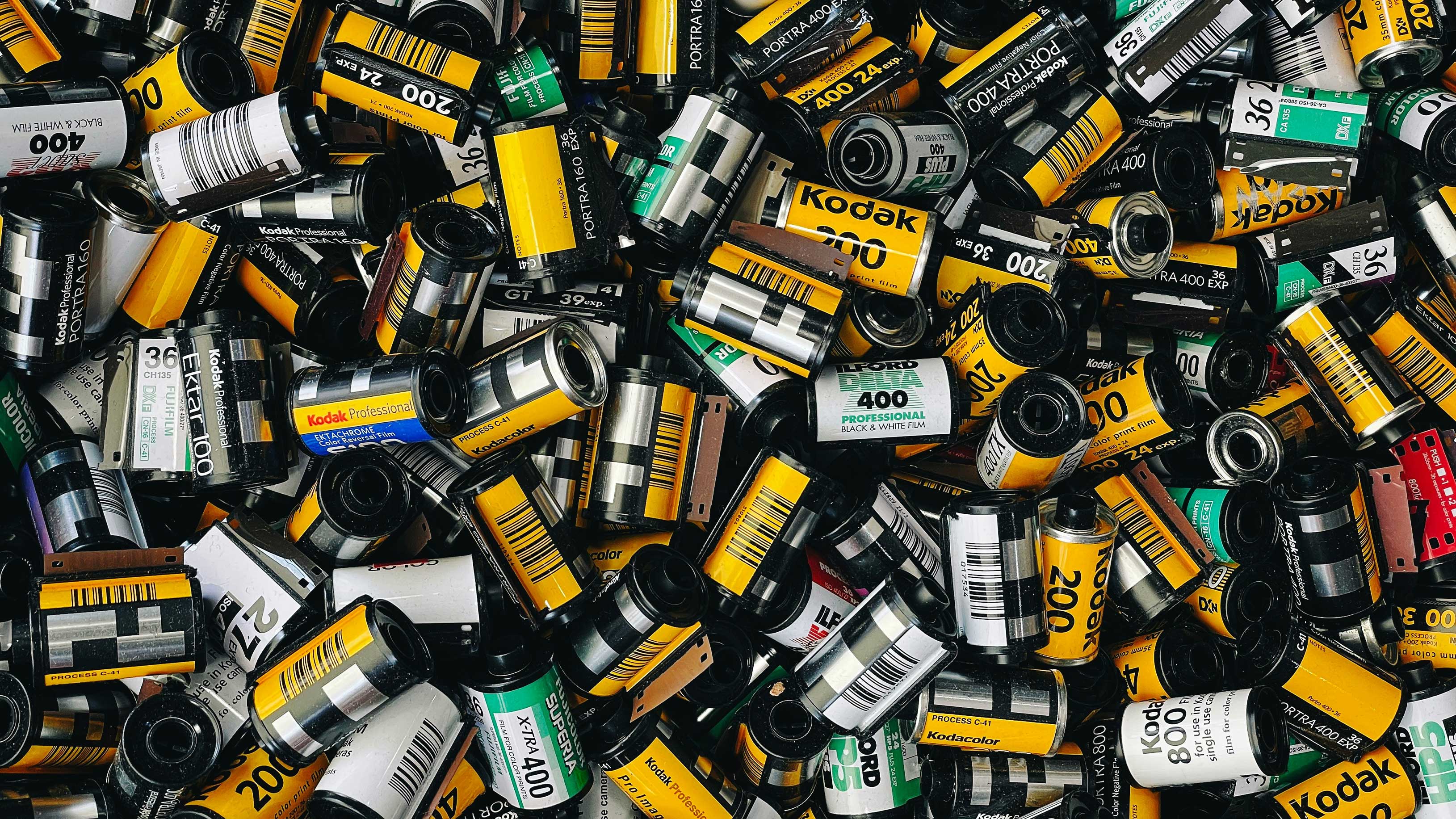Unveiling Film Stocks
The resurgence of analog film photography has ignited a renewed fascination with the technical and aesthetic attributes of various film stocks. These photographic films, also known as film emulsions, hold a pivotal role in the realm of photography, offering distinctive characteristics and visual allure. Delving into the history and significance of film stocks unveils profound insights into the enduring relevance of analog film photography.
Resurgence of Film Photography
Return to Analog
- The resurgence of film photography marks a return to traditional photographic methods, drawing photographers back to the allure of analog processes.
- Rediscovering the unique qualities and artistic potential of film photography has sparked a renewed interest in the timeless art form.
Appeal to New Generations
- Embracing film photography has become a trend among younger generations, offering them an opportunity to delve into the origins of the art form.
- The tactile and tangible nature of film photography provides a refreshing departure from the pervasive digital technology, allowing enthusiasts to engage more intimately with their craft.
Popular Film Stocks
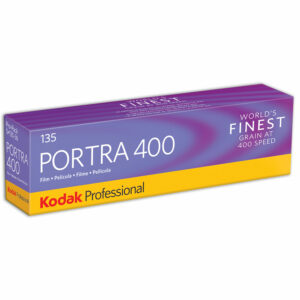
Kodak Portra
Kodak Portra is highly regarded for its exceptional portrayal of natural skin tones and its fine grain structure, which adds a subtle yet compelling texture to images. Photographers value the versatility of Kodak Portra film, as it delivers vibrant colors and remarkable detail, making it suitable for a wide range of photographic subjects. Kodak Portra comes in two film speeds 400 ISO & 800 ISO.
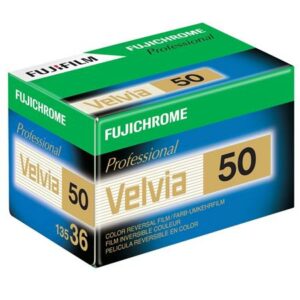
Fujifilm Velvia
Fujifilm Velvia has earned acclaim for its remarkable high-saturation and vivid color reproduction, particularly well-suited for capturing the rich and vibrant hues of landscapes. Nature photographers favor this film for its ability to bring out the intricate details and striking colors present in natural settings.
Note: Fujifilm Velvia is a color reversal film (Slide Film). As a result, the negative becomes a positive, hence the name color reversal. Color reversal film gets processed differently than negative film using E-6 processing. It is also possible to cross-process using C-41 (Color processing), but know that this will increase contrast, saturation, and graininess.
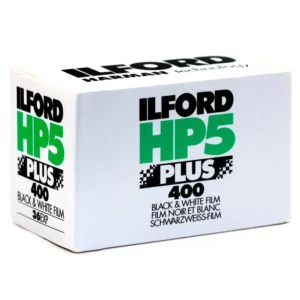
Ilford HP5+
Ilford HP5+ is revered for its classic black and white aesthetic, offering a timeless appeal with its fine grain structure and excellent contrast. This versatile film stock is well-suited for various lighting conditions due to how well it handles pushing and pulling, making it a popular choice among photographers seeking to capture monochrome imagery with depth and clarity.
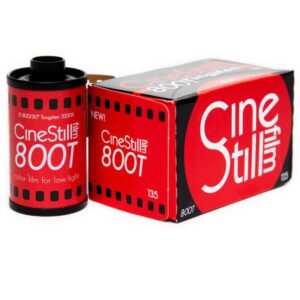
Cinestill 800T
Cinestill 800T is celebrated for its unique cinematic quality, originally derived from motion picture film. With its distinctive tungsten balance, this film stock delivers a captivating blend of warm tones and fine-grain texture, ideal for creating visually compelling night scenes and low-light environments. As the company’s first color film stock, 800Tungsten, also known as 800T®, was first released in 2013. This film is a variant of Kodak’s Vision 3 5219 motion picture cinema film. Film cartridges for 35mm are factory-spooled with a DX code.
Film stocks play an integral role in photography by offering diverse visual characteristics that cater to different artistic visions.
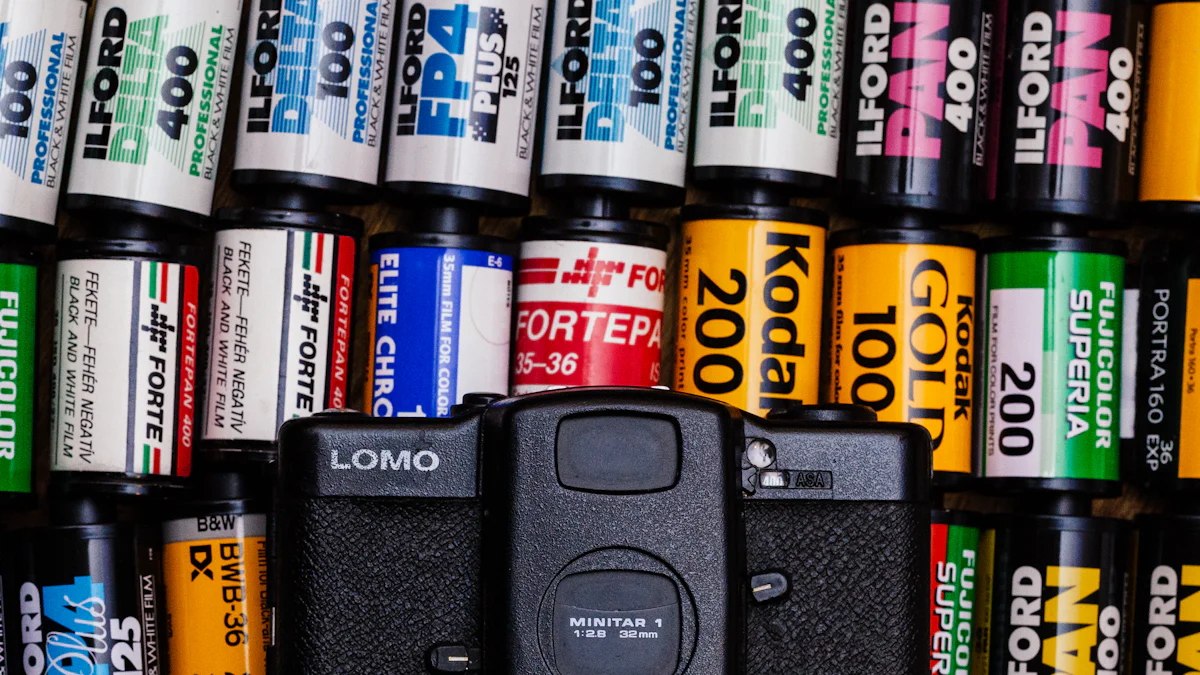
Advantages of Film Stocks
Film stocks offer a range of advantages that contribute to their enduring popularity and appeal among photographers. These advantages encompass both aesthetic qualities and technical capabilities, making film stocks a compelling choice for various photographic styles.
Aesthetic Appeal
- The timeless and nostalgic aesthetic of film stocks holds a strong allure for many photographers, evoking a sense of authenticity and artistic tradition.
- The unique characteristics of film, such as its grain structure and color rendition, contribute to the overall visual appeal of film photography, adding depth and texture to images in a way that digital photography often cannot replicate.
Dynamic Range
- One of the key advantages of film stocks is their wide dynamic range, enabling them to capture intricate details in both highlights and shadows with remarkable precision.
- This ability to retain details in high-contrast scenes makes film stocks particularly well-suited for certain photographic styles, such as landscape or architectural photography, where preserving fine details across varying light conditions is essential.
The diverse aesthetic qualities and technical capabilities of film stocks make them a versatile and compelling medium for photographers seeking to capture unique visual narratives with depth and character.
When learning about film stocks and it’s dynamic range, you might hear the term latitude.
What does latitude mean in film photography?
A film stock’s latitude refers to its ability to tolerate under- or overexposure. Reversal film, for all practical purposes, has very little latitude. Negatives have greater latitude, and in particular, they are tolerant of a greater amount of overexposure than underexposure.
Film vs. Digital Photography
In comparing film photography with digital photography, it becomes evident that each offers distinctive characteristics and considerations that contribute to their unique appeal and artistic expression.
Distinctive Characteristics
- Film photography presents a distinct look and feel that sets it apart from digital images. The analog nature of film photography contributes to its unique visual appeal, imbuing images with a timeless quality that is often difficult to replicate in the digital realm.
- The organic grain structure and color rendition of film stocks add depth and texture to images, creating a nostalgic aesthetic that resonates with many photographers and enthusiasts.
Technical Considerations
- Engaging in film photography requires a thoughtful and deliberate approach to exposure and composition. Unlike digital cameras, where instant feedback is available, shooting with film demands a deeper understanding of light, exposure, and photographic principles.
- The tactile process of working with film encourages photographers to take a more deliberate approach to each shot, fostering an intimate connection with the art form and enhancing their technical proficiency.
The distinctive characteristics of film photography, coupled with the technical considerations involved, contribute to its enduring allure as a traditional and analog medium for visual storytelling. As such, both film and digital photography offer unique experiences for photographers seeking to express their creativity through different means.
Timelessness of Film Photography
Enduring Appeal
The enduring appeal of film photography transcends the evolution of technology, retaining its timeless allure in the digital age. Despite the advancements in digital imaging, film photography continues to captivate photographers and enthusiasts worldwide. The tactile nature of film, combined with its distinctive visual characteristics, contributes to its enduring charm. The organic grain structure and color rendition of film stocks evoke a sense of authenticity and artistic tradition that resonates across generations.
Historical Significance
The historical significance of film photography is deeply interwoven with the evolution of visual arts and culture. From its early roots in black-and-white imagery to the vibrant color palettes of modern film stocks, the history of film photography reflects pivotal moments in artistic expression and technological innovation. Understanding this historical context enriches our appreciation of the art form by providing insight into the cultural impact and creative legacy of analog photography.
Throughout time, film photography has remained a steadfast medium for visual storytelling, preserving its unique appeal amidst the ever-changing landscape of photographic technology.
Capturing with Film Stocks
Artistic Expression
Film stocks serve as a versatile medium for unleashing creative expression and weaving compelling visual narratives. The unique characteristics of different film stocks, from grain structure to color rendition, offer photographers a diverse palette to articulate their artistic vision. Each film stock imparts its own distinct mood and atmosphere to the images captured, allowing photographers to craft stories with depth and emotion.
The tactile and immersive experience of shooting with film adds an extra dimension to the artistic process. From loading the film into the camera to advancing the frames after each shot, every step fosters a deeper connection between the photographer and their craft. This hands-on approach encourages a more intimate and deliberate engagement with the subject matter, resulting in imagery that resonates with authenticity and creativity.
Embracing the Analog Process
The analog process of shooting and developing film cultivates a profound connection to the art of photography. Unlike digital photography, where instant feedback is readily available, working with film demands patience, precision, and an acute understanding of light and exposure. Photographers value this deliberate approach as it allows them to refine their technical skills while immersing themselves in the timeless tradition of analog photography.
Furthermore, the development stage presents an opportunity for photographers to further shape their artistic vision. Through various chemical processes and printing techniques, photographers can exert greater control over the final outcome of their images, adding another layer of creativity to their work.
Embracing Film Stocks
In embracing film stocks, photographers immerse themselves in a rich tapestry of visual possibilities and artistic expression. The history and diversity of film stocks underscore the enduring relevance of film photography in the digital age, offering a unique visual language for storytellers to explore and express their creativity.
Embracing the art and craft of film photography enriches our understanding of visual storytelling and the timeless allure of analog photography. Through the tactile process of working with photographic film, photographers engage in a hands-on approach that fosters a deeper connection to the art form. This intimate involvement allows for a more deliberate and thoughtful exploration of composition, light, and subject matter, resulting in imagery that resonates with authenticity and creativity.
Embracing Film Photography: “Working with film stocks is not just about capturing images; it’s about engaging in a profound dialogue between the photographer, the subject, and the medium itself.”
By delving into the nuances of film emulsions, photographers open themselves up to an expansive realm of creative possibilities. The unique characteristics of each film stock offer a diverse palette for articulating artistic visions with depth and emotion. From capturing vibrant landscapes to intimate portraits, embracing film stocks provides photographers with an avenue to infuse their work with a timeless aesthetic that transcends technological trends.
